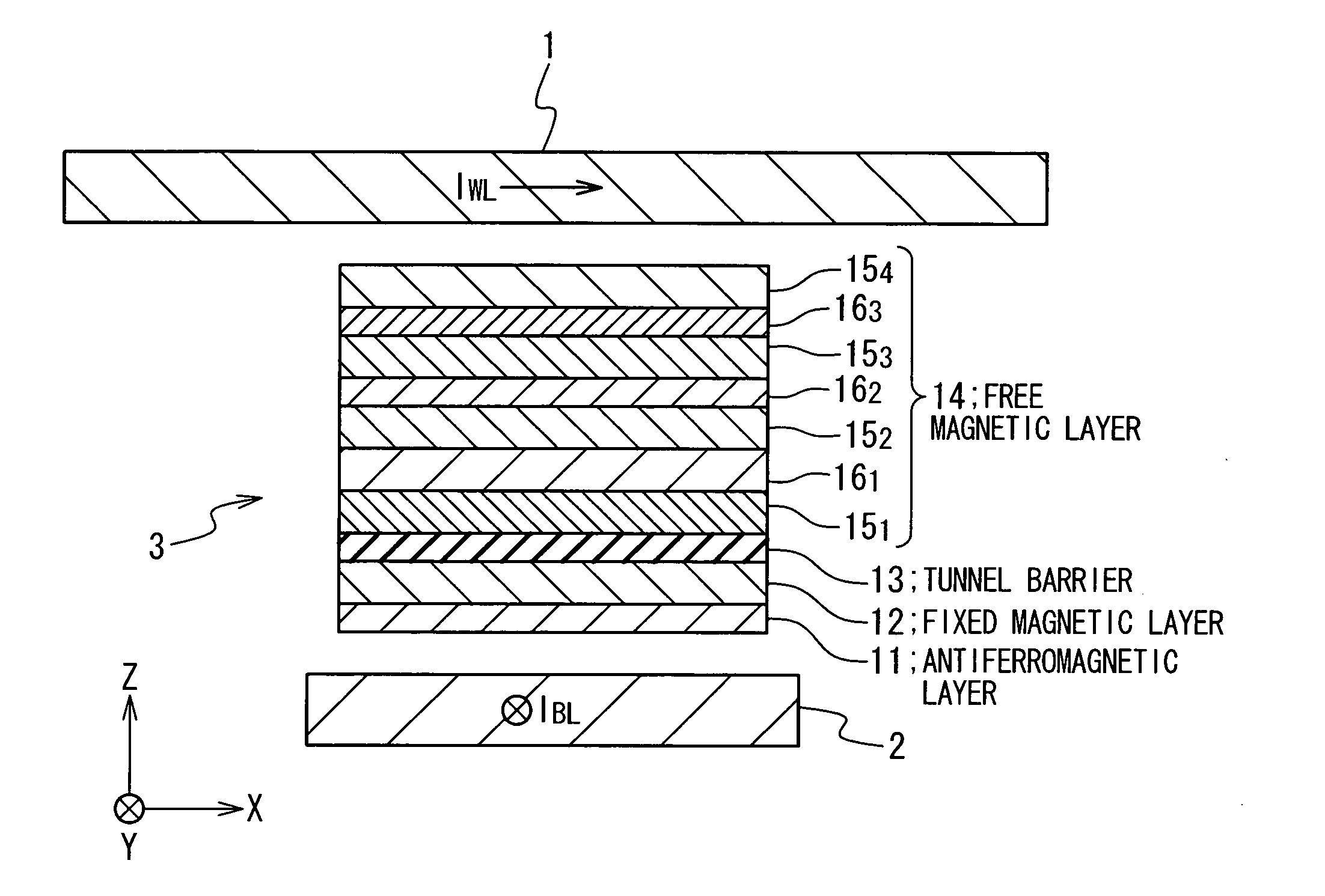Magnetic memory adopting synthetic antiferromagnet as free magnetic layer
a technology of magnetic memory and free layer, applied in the field of magnetic memories, can solve problems such as uncertainty of magnetization directions, and achieve the effect of improving the operation range of magnetic memories
- Summary
- Abstract
- Description
- Claims
- Application Information
AI Technical Summary
Benefits of technology
Problems solved by technology
Method used
Image
Examples
first embodiment
[0047]FIG. 6 is a section view illustrating an exemplary structure of a magnetic memory in a first embodiment of the present invention. The magnetic memory is composed of a word line 1, a bit line 2, and a magnetoresistance element 3, used as a memory cell. It will be understood that FIG. 6 partially illustrates the structure of the magnetic memory, and the magnetic memory is actually composed of a number of word lines 1, bit lines 2, and magnetoresistance elements 3. The word line 1 and the bit line 2 are extended in substantially orthogonal directions; in this embodiment, an x-axis direction is defined along the word line 1, and a y-axis direction is defined along the bit line 2. The word line 1 and the bit line 2 are connected to a write circuit (not shown) that provides a set of write currents IWL and IBL for the word line 1 and the bit line 2, respectively. In one embodiment, the write circuit is composed of decoders, and current sources developing the write currents IWL and IB...
second embodiment
[0077] As described above with reference to FIG. 9B, the magnetic memory presented in the first embodiment may suffer from the fact that he ferromagnetic layers 151 to 154 do not function as a synthetic antiferromagnet due to the independent behavior of the ferromagnetic layer 151 from the remaining ferromagnetic layers 152 to 154, when the strength of the antiferromagnetic coupling between the ferromagnetic layer 151 and 152 is largely different from those between the ferromagnetic layer 152 and 153 and between the ferromagnetic layer 153 and 154. This undesirably inhibits the magnetic memory from achieving successful toggle writing.
[0078] In order to avoid such problem, the free magnetic layer is desirably designed so that the intermediate pair(s) of the ferromagnetic layers exhibit relatively strong antiferromagnetic coupling compared to the both end pairs of the ferromagnetic layers.
[0079]FIG. 16 is a section view illustrating an exemplary structure of such designed magnetic m...
PUM
 Login to View More
Login to View More Abstract
Description
Claims
Application Information
 Login to View More
Login to View More - R&D
- Intellectual Property
- Life Sciences
- Materials
- Tech Scout
- Unparalleled Data Quality
- Higher Quality Content
- 60% Fewer Hallucinations
Browse by: Latest US Patents, China's latest patents, Technical Efficacy Thesaurus, Application Domain, Technology Topic, Popular Technical Reports.
© 2025 PatSnap. All rights reserved.Legal|Privacy policy|Modern Slavery Act Transparency Statement|Sitemap|About US| Contact US: help@patsnap.com



